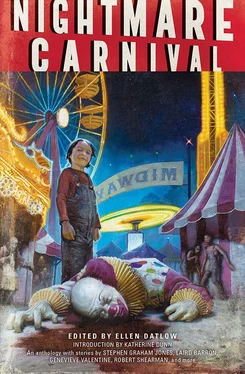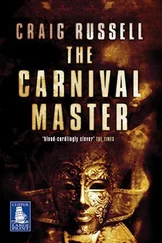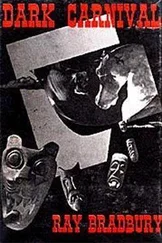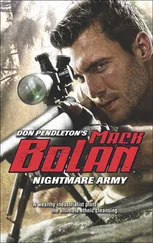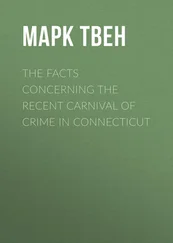Strangler had two choices: listen to his ankle break, then his kneecap pop, then his groin tear; or he could just roll onto his back. The ref that night had two choices too: count to three, or blow kayfabe and let eight hundred paying customers and the WEO-TV 44 camera operators and everyone else out there in Televisionland know that professional wrestling was a work. Ah, work , just another word for bullshit.
Strangler Frankhauser rolled over. The ref counted to three. The camera operator zoomed in for a close-up. Chattopadhyay — what had been his gimmick at the time, anyway? The Savage of Borneo? Chief Pow-Wow? — held the belt high.
Back in the locker room, it took six guys to pry it out of his hands and dump Chattopadhyay, a bleeding wreck minus three teeth, out on the edge of town. Television was over for him, forever. So he signed up with Jeff Gordon’s All-Star All-Comers, and wrestled the same exact match, night after night. He let himself get soft, let himself do the dumbest spots for the dumbest rubes in ten states.
But that little boy knew how to live. He could work, he could shoot, he could hook.
And he could rip.
Ripping is hard to train. You can’t live-drill it, unless you want a crippled sparring partner. But Chattopadhyay knew how to do it.
He’d practiced it on goats, since the age of eight. Under the watchful eyes of his teachers.
He kept up the practice, even in America. He’d known a man in Pittsburgh with a small herd. That man’s name had been Kalamatas.
And now, under the college boy, with his breath fading fast, he reached up till his fingers found the collarbone. And he ripped it out of college boy’s chest.
There was a sound like a wave. Then a shotgun blast, and the smell of powder. The last thing Chattopadhyay saw that night was the sledgehammer from the high-striker coming down on him.
There’s no carny wrestling these days. And there are precious few sideshows, but there’s one nameless carnival known to travel the Pennsylvania-Ohio circuit, and it has a sideshow. Jeff Gordon’s All-Star Plights of Humanity, that’s what the sign reads. And there’s a painting of a man, green with outstretched arms that end in blobs of purple putty, on the trailer front too.
But there’s no such exhibit as that green man. The All-Star Plights of Humanity is a pure geek show — not a birth defect or a hairy doll to be seen.
Gordon’s dead and buried, and Johnny the Plant runs the geek show.
He’s got two prize geeks. One’s called Mr. Whiplash. A promising young college boy who made the near-fatal error of drinking and driving while listening to jungle music on his car’s AM radio. He sits in a stool, dribbling onto his lap, a long and very realistic- looking bone protruding from the flesh of his chest. Multiply concussed during the postmatch riot, the college boy wasn’t one anymore. College boy wasn’t much of anything, anymore. He could dress and feed himself though, so Jeff Gordon had taken him on.
The other Plight of Humanity is the Human Dent. He’s an older man, and he can even talk, though for the most part nobody can understand what he’s saying, but it sure ain’t English. Where his left temple used to be is just a huge gouge. Some say that Mr. Whiplash ran this poor man down, and that’s how they both ended up geeks, sitting on a raised platform, four feet apart, on separate stools.
And there’s even proof that the story is a true one, ladies and gentlemen. Get too close to Mr. Whiplash on his stool, reach out to touch the shank of bone to see if it’s legit, and the Human Dent will turn his head, stop his chilipepperese mumbling for once, and growl in an accent that sounds almost British.
“Hands off! He’s mine!”
AND THE CARNIVAL LEAVES TOWN
by A. C. Wise

The first piece of evidence appears on Walter Eckert’s desk in a locked office to which he has the only key. It is wrapped in brown paper, neatly labeled with his name, no return address. He unwraps it with wary hands.
Cheap plywood, as if from a construction site wall, pasted with a handbill-sized poster. It could be advertising any event around town — a rock band no one has ever heard of, an avant garde art exhibition no one will ever see — but it appears to advertise nothing at all.
The paper is grayed. Darkened by soot, slush, city smog. Carved into the bottom right hand corner of the wood is a date — October 17, 1973—a date currently forty-one years, one month, and fourteen days in Walter’s past.
The image: A clown in whiteface, black crosses over his eyes, tilted slightly so they resemble Xs. A conical hat. Pompoms in black against the whiteness of his baggy uniform. The clown cradles an infant’s skeleton in his arms.
The skull is human, but subtly wrong, enlarged. There is a hair-thin fracture, widening and darkening as it runs back toward where the skull meets the spine. Out of the camera’s view, one can only imagine the clot of darkness where the fissure disappears, the fragments of bone, caved in beneath a terrible blow. The rib cage appears human as well, but unnaturally small in comparison to the skull.
Below the waist, the skeletal remains are not remotely human.
Walter Eckert has investigated almost everything in his time— domestic violence, cheating partners, insurance fraud, arson, petty theft, and even murder. He has never encountered anything quite like this before. Cold case. Two parents, one child. House, abandoned. Cups half-filled with coffee. Beds, immaculately made. Clothing, neatly hung. Refrigerator, humming and full. Television, left on.
The house remains; the evidence of daily life remains. The Miller family is simply gone.
Walter isn’t certain what motivated him to look up the case. It wasn’t even his, back when he was on the force; he inherited the file from his partner, Don. Walter should be actively pursuing new clients, sleazily patrolling social media for rumors of infidelity and foul play. But there’s something about the poster, something about the date. They remind him of something, two seemingly disparate events that lodge in his mind and refuse to let go. So instead of seeking new business, Walter chases down the cold trail of business over forty years old.
A carnival enters town in the fall of 1973. The Millers are a seemingly happy family, living the American dream. The carnival leaves town, and the Millers are gone.
Their house is left in perfect condition. The only remarkable thing is thirteen-year-old Charlie Miller’s room. The posters of his favorite baseball players have been turned to face the wall; his baseball cards have been removed from their plastic sleeves and dealt out across his bed, face down. In his closet, his stuffed animals — artifacts of a younger age — have all had their eyes removed.
Three days after the Millers disappear, a group of kids gathers in an empty lot to play. Midway through the game of tag, the dust in the lot blows slightly to the west and uncovers the remains of two complete adult skeletons. The bones are aged, colored faintly as though with years buried under desert sands. The remains, lying side by side, holding hands, are eventually identified through dental records as Jasper and Anita Miller.
Charlie Miller is never found.
The second piece of evidence comes into Walter Eckert’s possession much as the first: Appearing in his locked office, part of his life as though it has always been there. It is a flat, gray canister, holding an old reel of film. Walter is at a loss until he remembers the storage locker in the basement of the building. He finds the key in his desk, descends into the chilly, ill-lit space, and digs out the old film projector left behind by his former partner, Don. The man never threw anything away, and it seems Walter has picked up his habit.
Читать дальше
